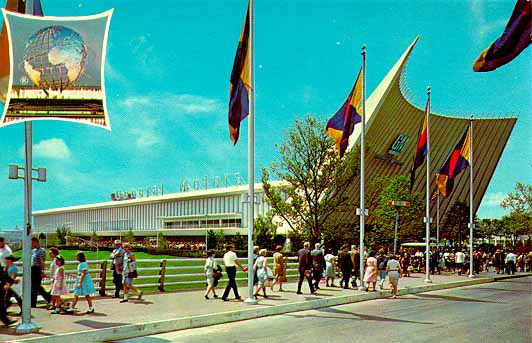Happier times, at least for some.
I recently started thinking about the 1964-65 World’s Fair held in the Flushing, Queens section of New York City. The World’s Fair was a showcase of technologies and lifestyles intended to show an optimistic future. It arose from the great expositions of the 19th century and continues on to this day. Expo 2020, unfortunately, did not happen but is currently scheduled in the Middle East for 2021. But for me and many others, the ’64-’65 World’s Fair represents something different and special.
An optimistic America driven by business
This was the day of Mad Men, of the Space Race and of DuPont’s “Better Living through Chemistry.” The early 1960s were a time of optimism, and although the country had absorbed a great shock in November 1963, by the summer of 1964 things were feeling quite optimistic.
Think of the World’s Fair as a precursor to Disney’s Epcot Center. It featured pavilions from all over the world hosted by people from those host countries. For one price you could walk around the fairground and feel like you’d traveled the world. This particular fair was heavily sponsored by large American businesses like AT&T and General Motors, a departure from earlier fairs.
A little history
In the early 20th century, the area of Queens at the northwest tip of Long Island was known as the Corona Ash Dumps. Remember that coal powered the city of New York at that time, and a massive amount of ash was created. All that ash was trucked to one site and dumped, creating a landscape almost moon-like. If you read The Great Gatsby in school, or saw the movie from a few years back, you can see a recreation of this area.
The park which eventually became the World’s Fairgrounds was created to host the 1939 World’s Fair, which was also seen as a monument to an optimistic future. Like the later fair, its organizers were gleefully unaware of the conflict that lie ahead. By the late 1950s, the fairgrounds were largely unused and the City of New York proposed creating an even greater fairgrounds. This area would not only host a large park but also a championship tennis ground and the stadium for the then-new Mets.
Mid-century architecture

If you’re a fan of mid-century architecture, you would swoon at what the fairgrounds looked like back then. The GM pavilion shown above was just one of the gorgeous buildings on display. Here’s another grouping of them:

This was the world that many Americans believed we deserved to live in, back then. Perhaps the most enduring monument to the fair was a giant globe known as the Unisphere. It is one of the few structures still standing in the park that is in good condition. You may remember it from the opening of The King of Queens. Shea Stadium is at upper left.

The most interesting demonstration

Perhaps the most interesting thing to see at the fair was at the Bell System/AT&T pavilion. AT&T showed its PicturePhone service. PicturePhone used a tiny black and white screen to give people video calling. Here’s a closer look.

They actually did roll out this service to people but it was ridiculously expensive. Still it set the stage for Skype, FaceTime, and eventually Zoom.
A moving record of the fair
There are a number of films of the fairground as it looked back then available online. Here’s one of my favorites:
In it you can see the Bell System pavilion, with peoplemover technology created by Disney.
The fairgrounds today
The World’s Fair site is still around in Flushing Meadows, New York, but it doesn’t look as good as it did in 1964. Shea Stadium was demolished to make room for Citi Field, a much larger and less disgusting ballpark. [Trust me kids, I was at Shea in the 1970s and never have I been in a smellier building.] The Unisphere still stands but most of the other buildings have been removed. The few that exist are largely in disrepair. The sole exception is the Queens Museum, which had originally been a skating rink during the 1939 fair and was repurposed into a panorama of New York City during the 1964 fair. It was featured briefly in an episode of Mr. Robot.
The tennis grounds adjacent to the World’s Fair site, now known as the USTA Billie Jean King National Tennis Center, have been spared from decay and actually upgraded. They’re now home to the US Open Grand Slam.
It seems that history didn’t quite turn out like the World’s Fair organizers hoped, but there’s still a lot of fun to be had in immersing yourself in the way things were, as they said in the sixties, for “one brief shining moment.” The reality of life in the past may not match up to our dewy memories of it, but as long as we’re aware of that there’s no harm in a little indulgence.



